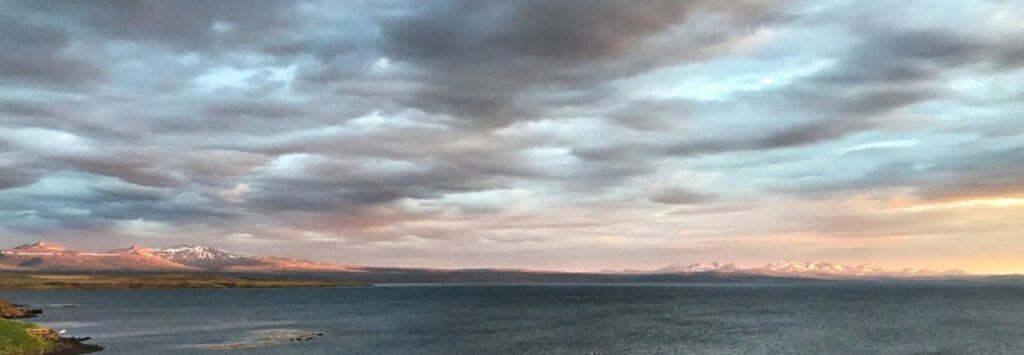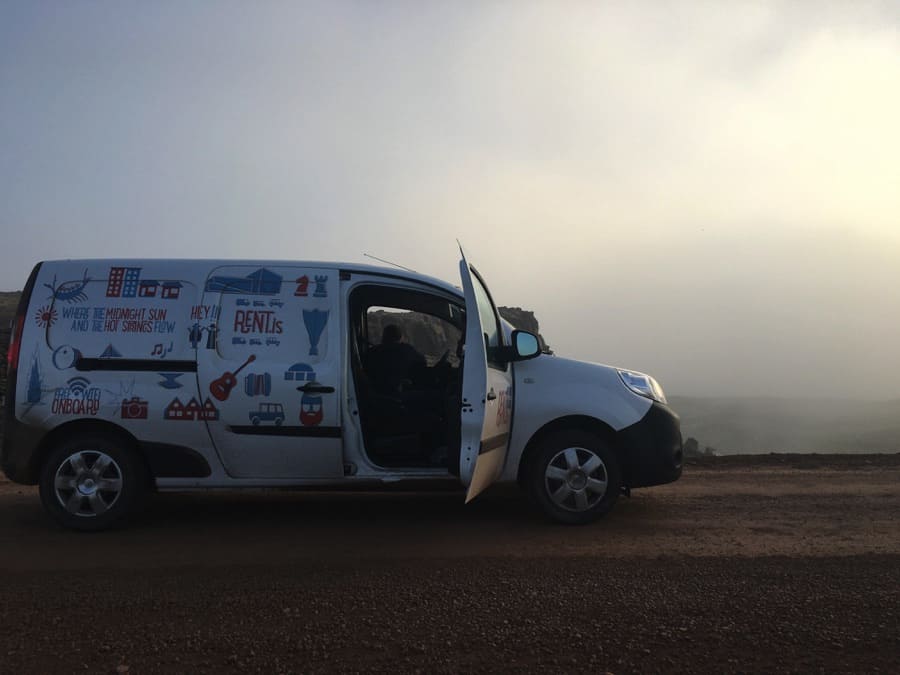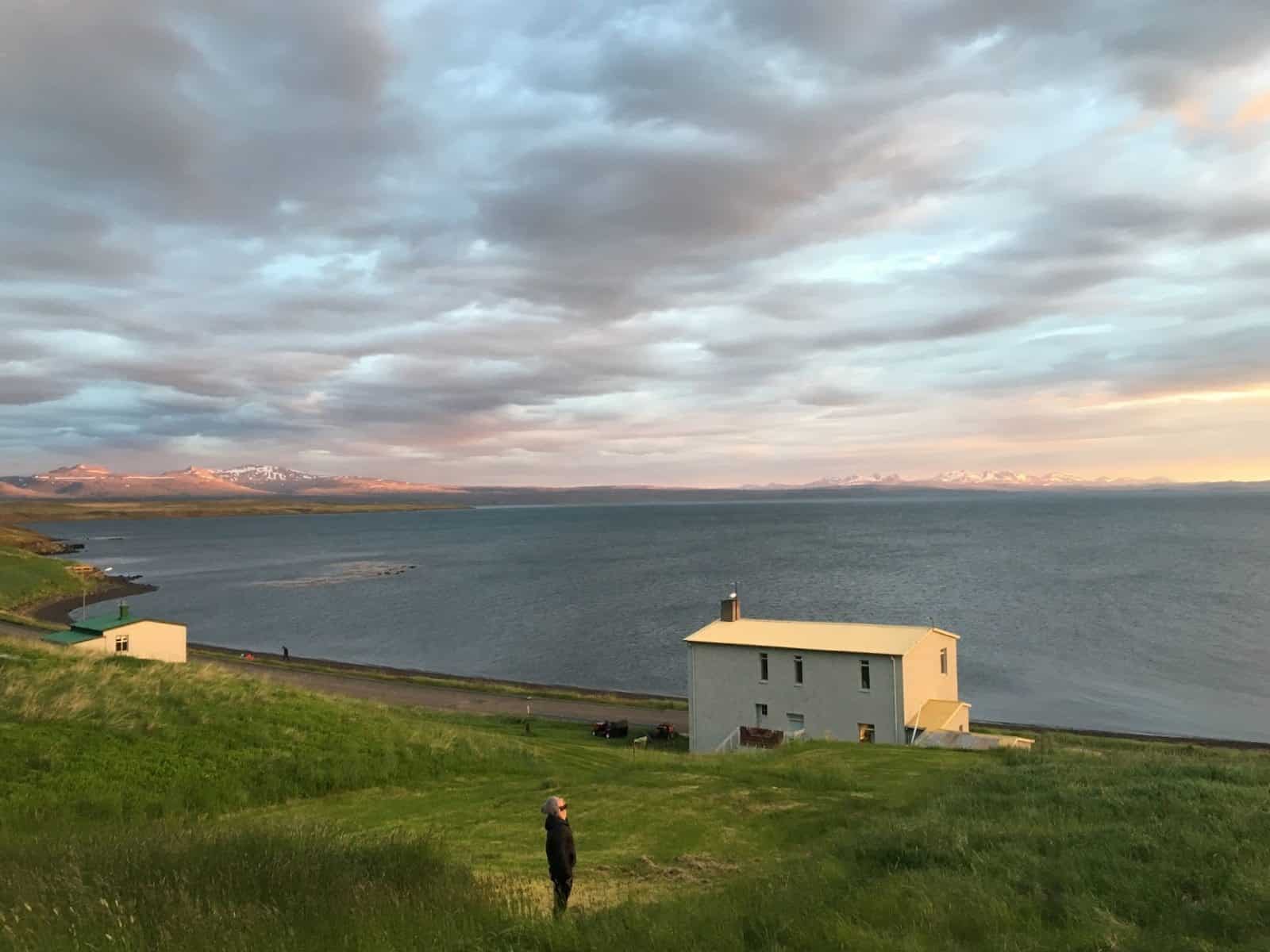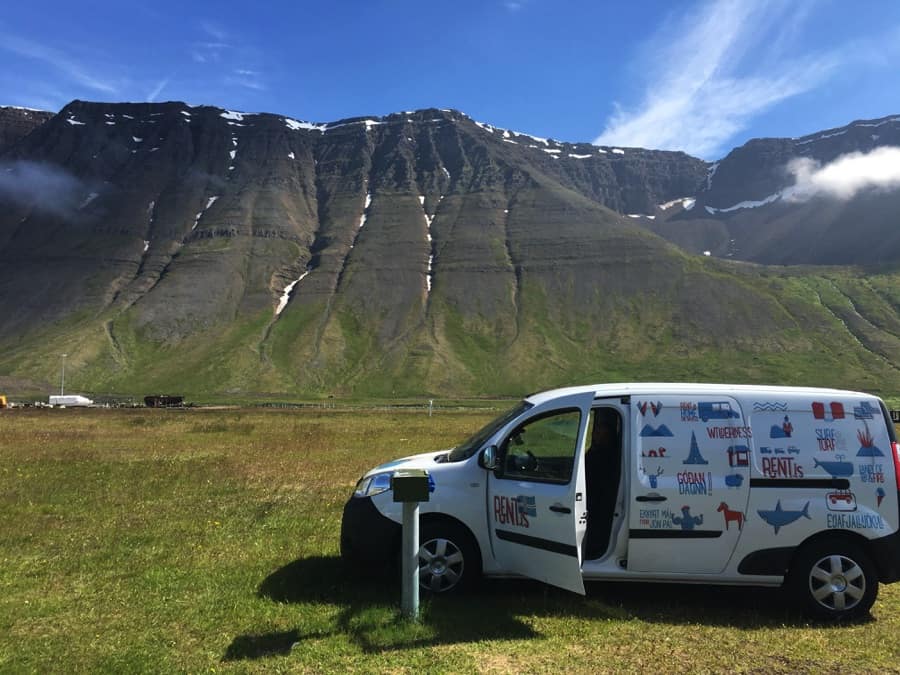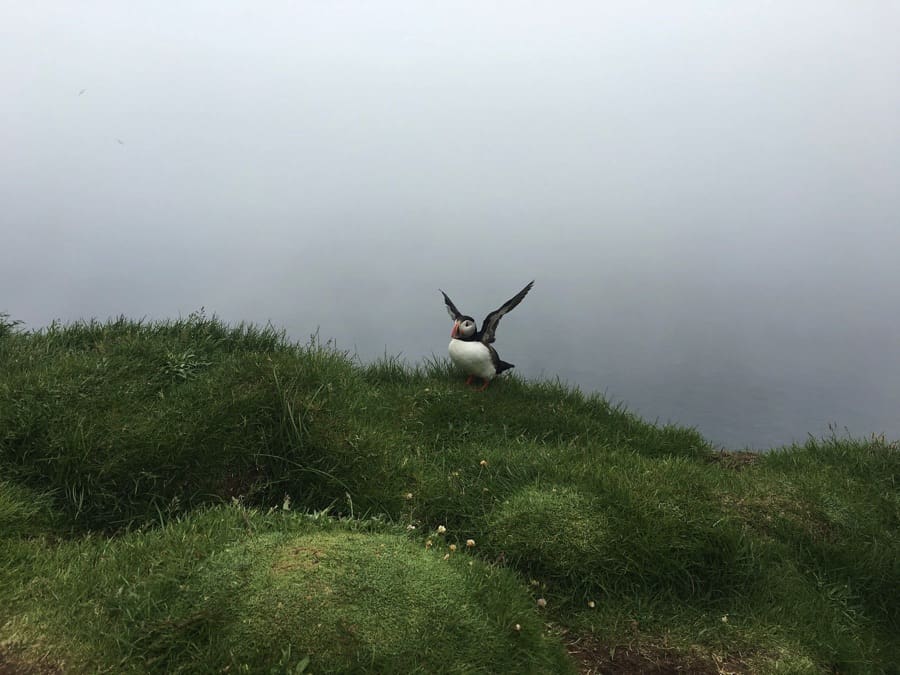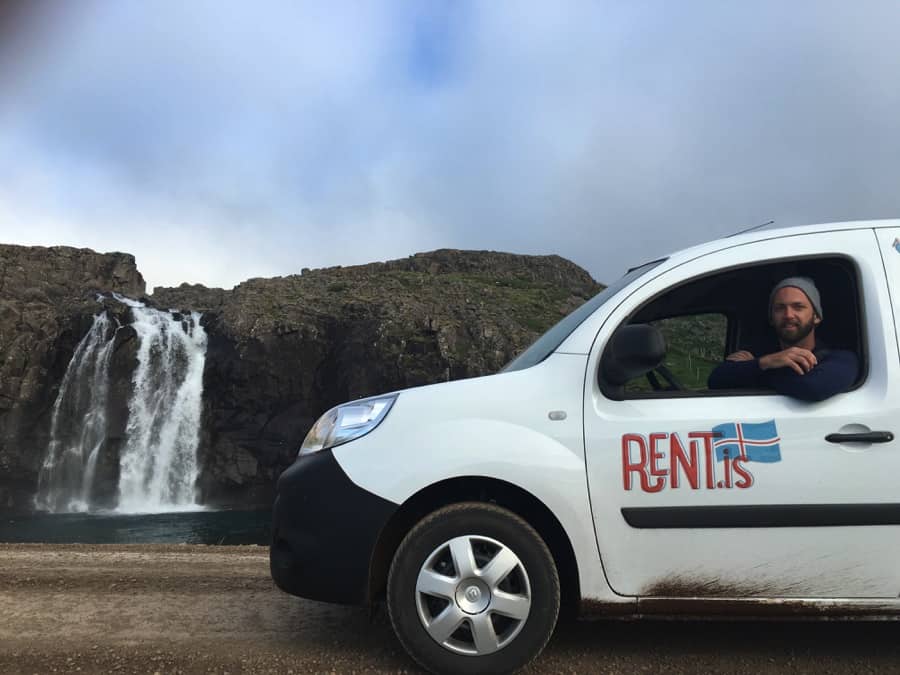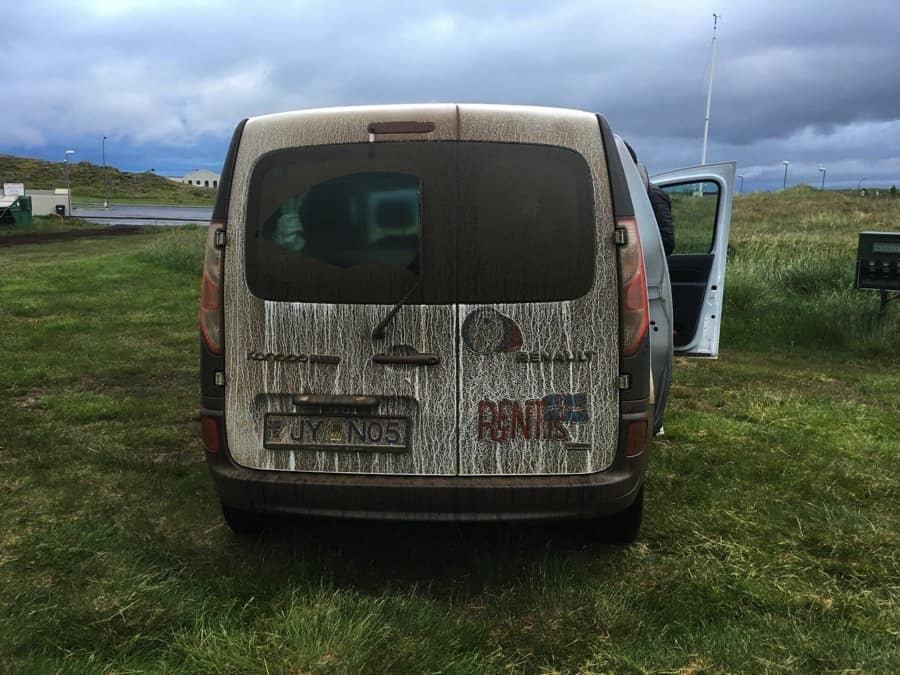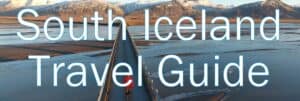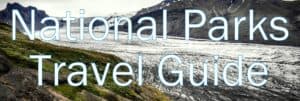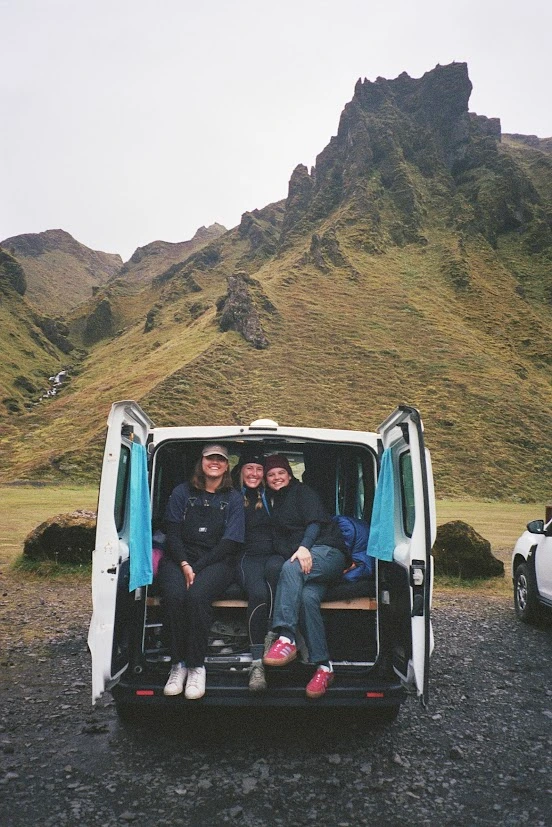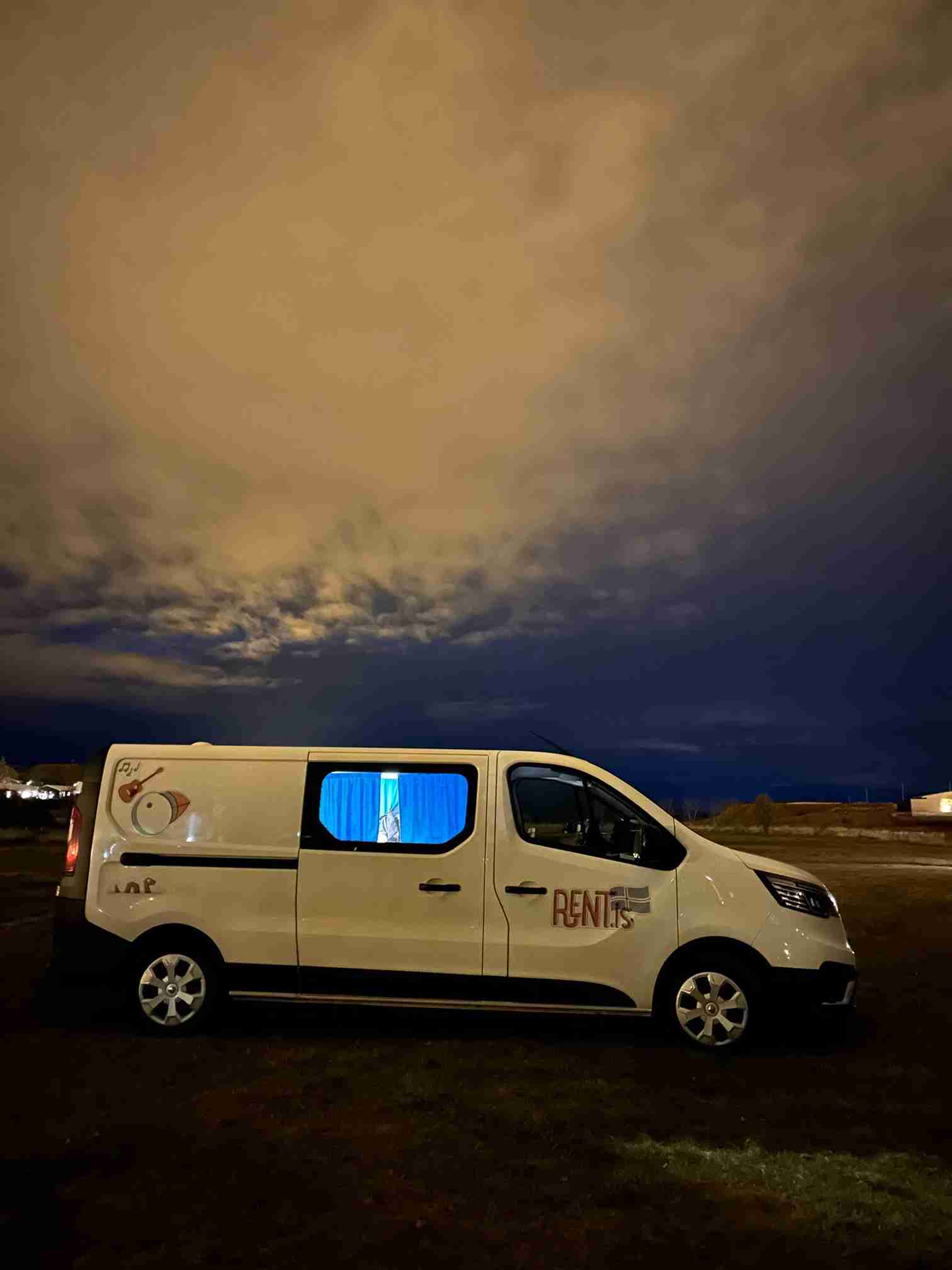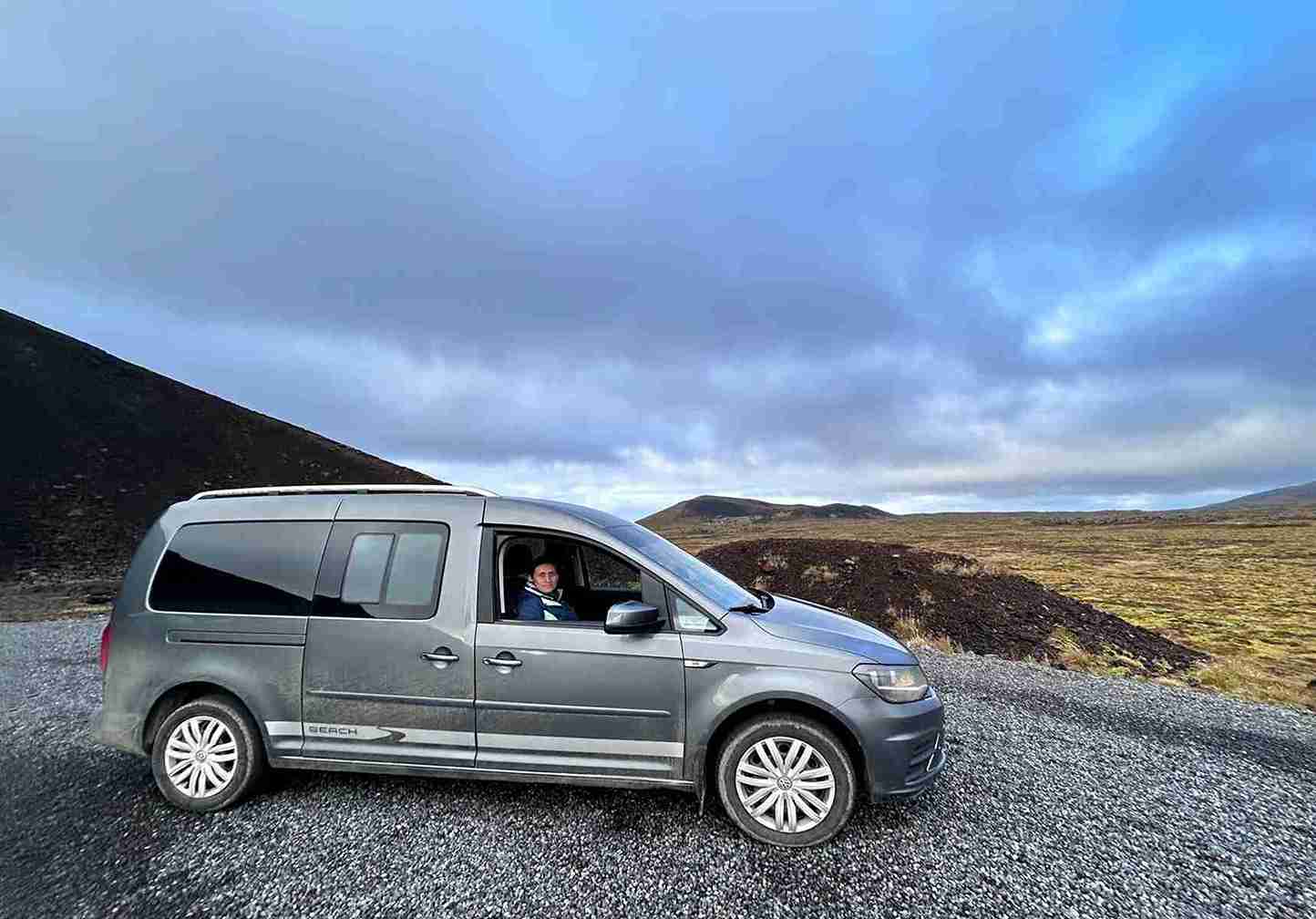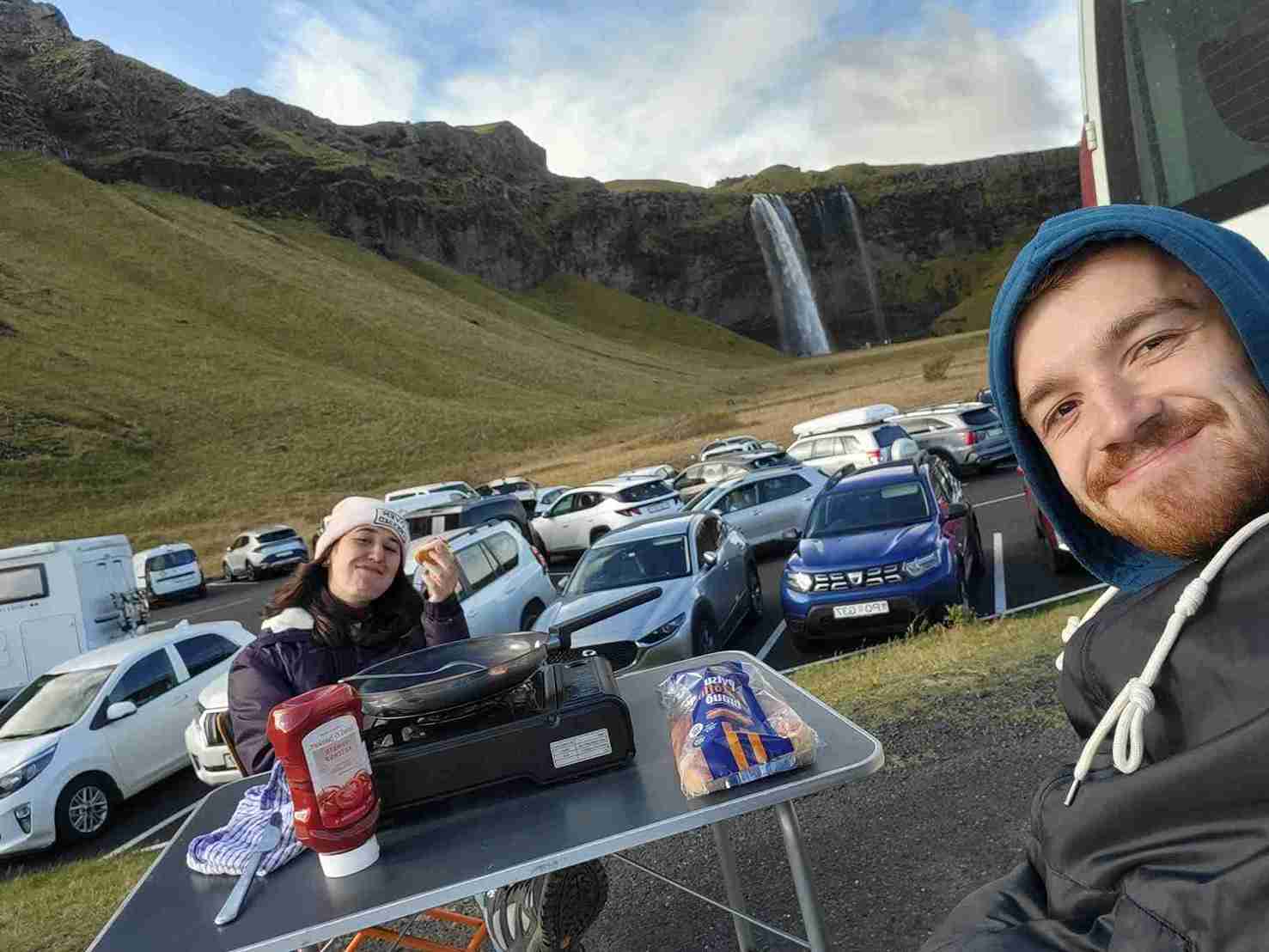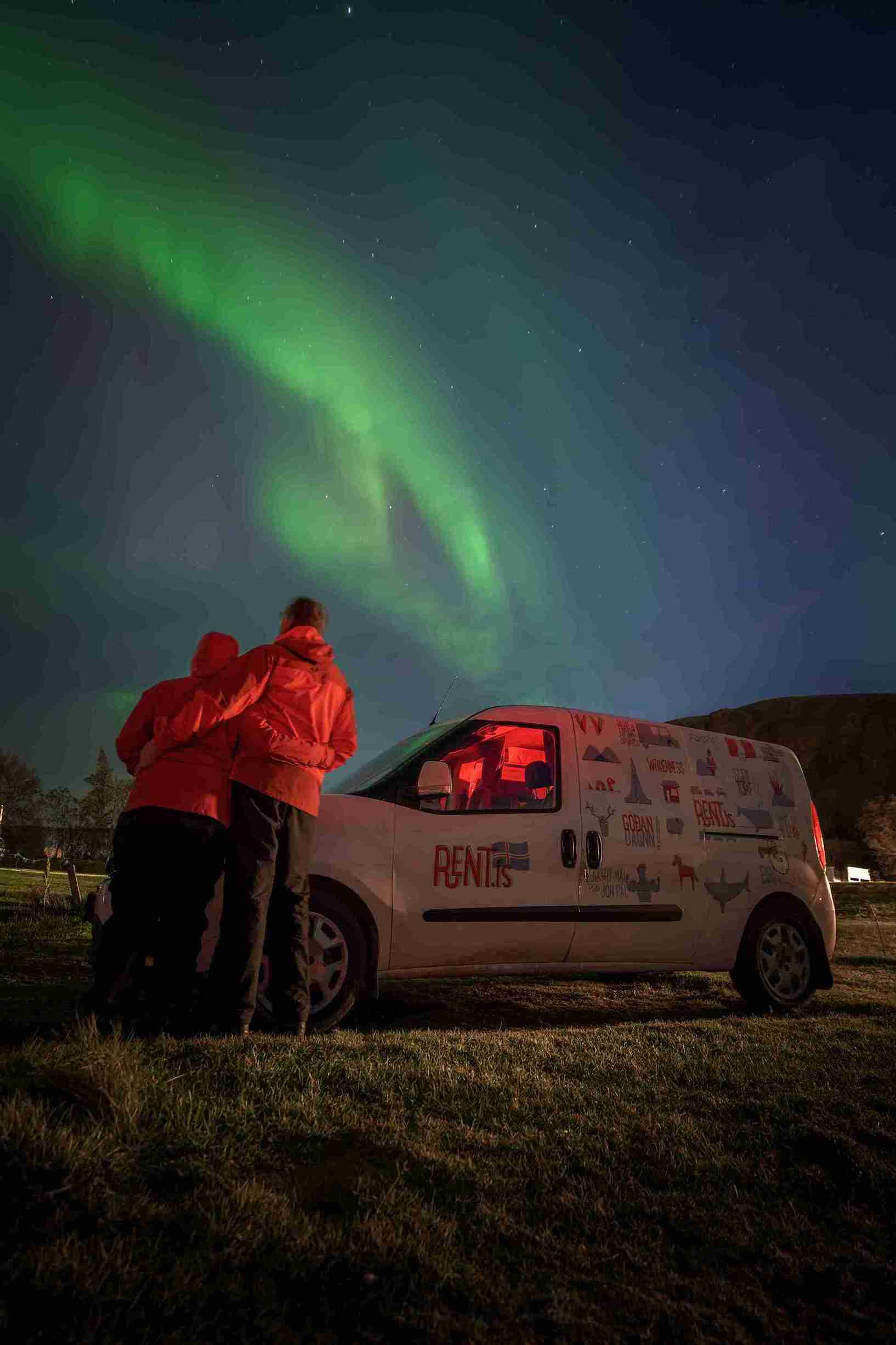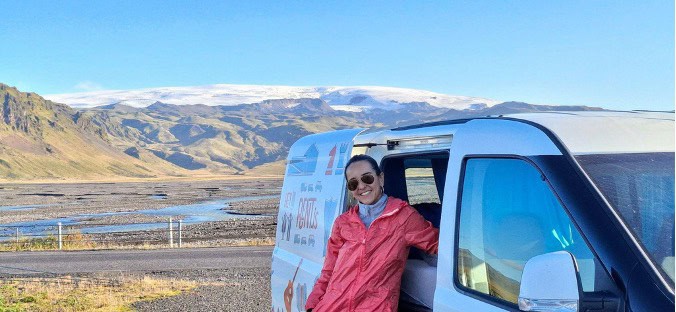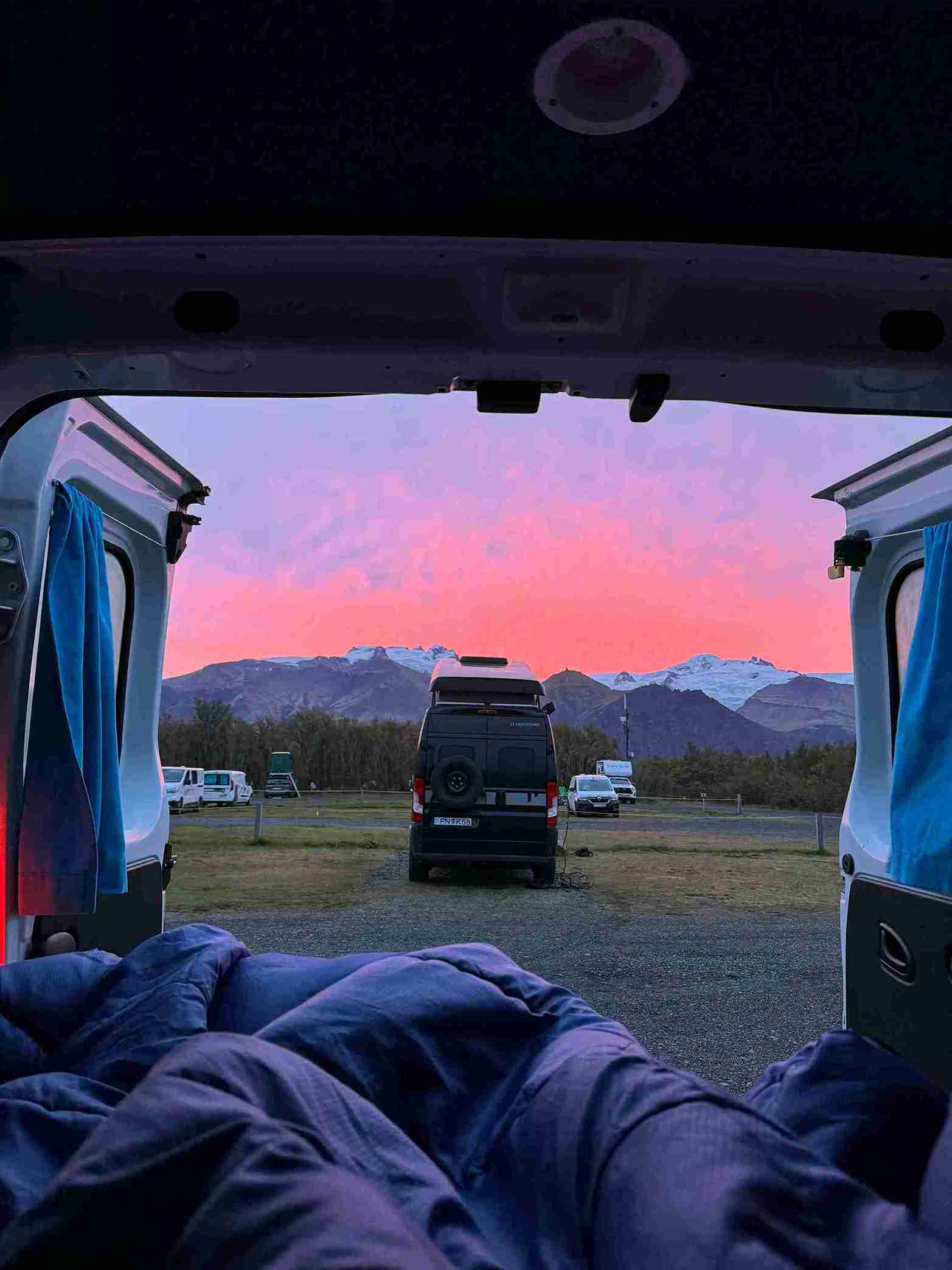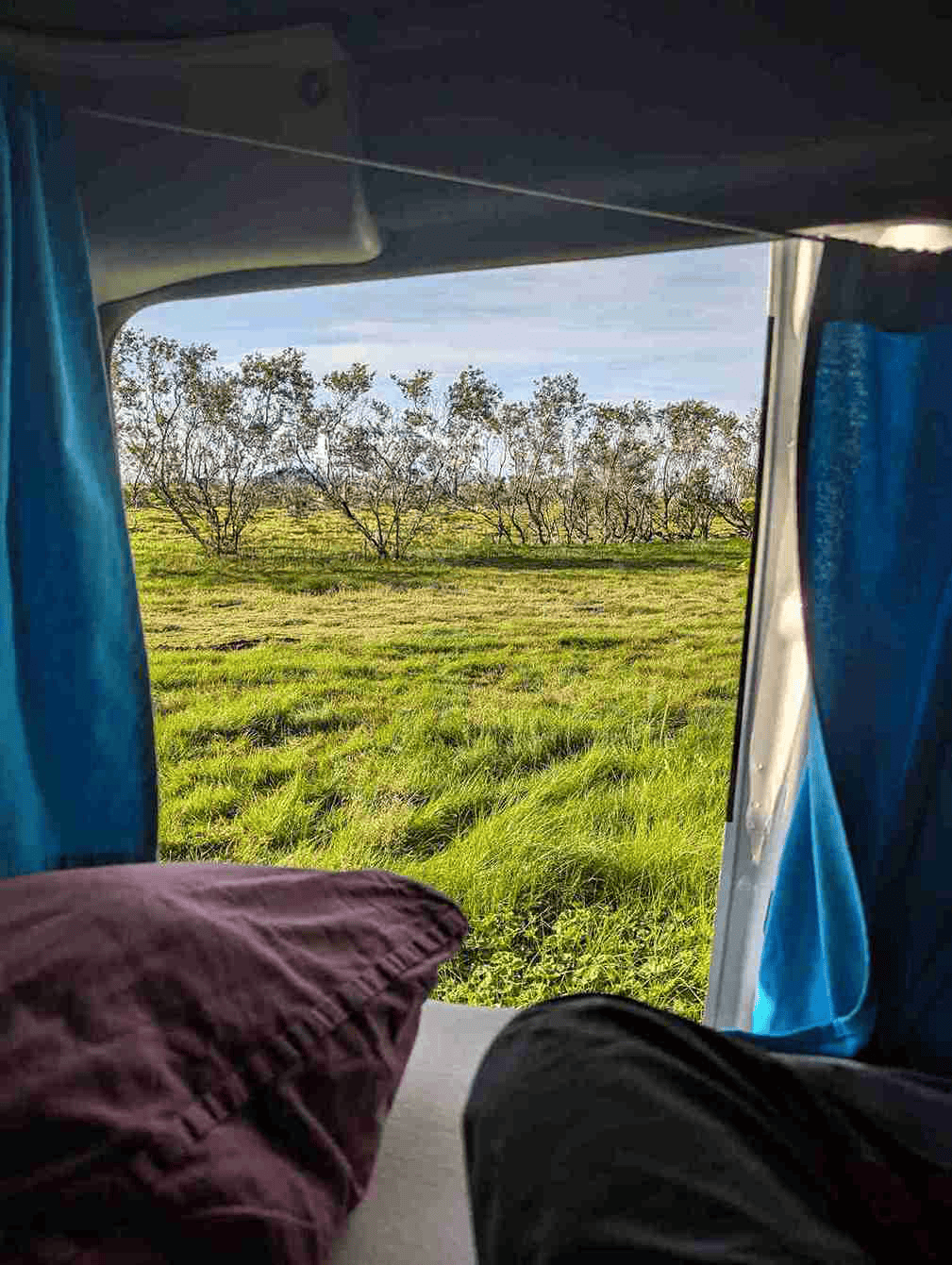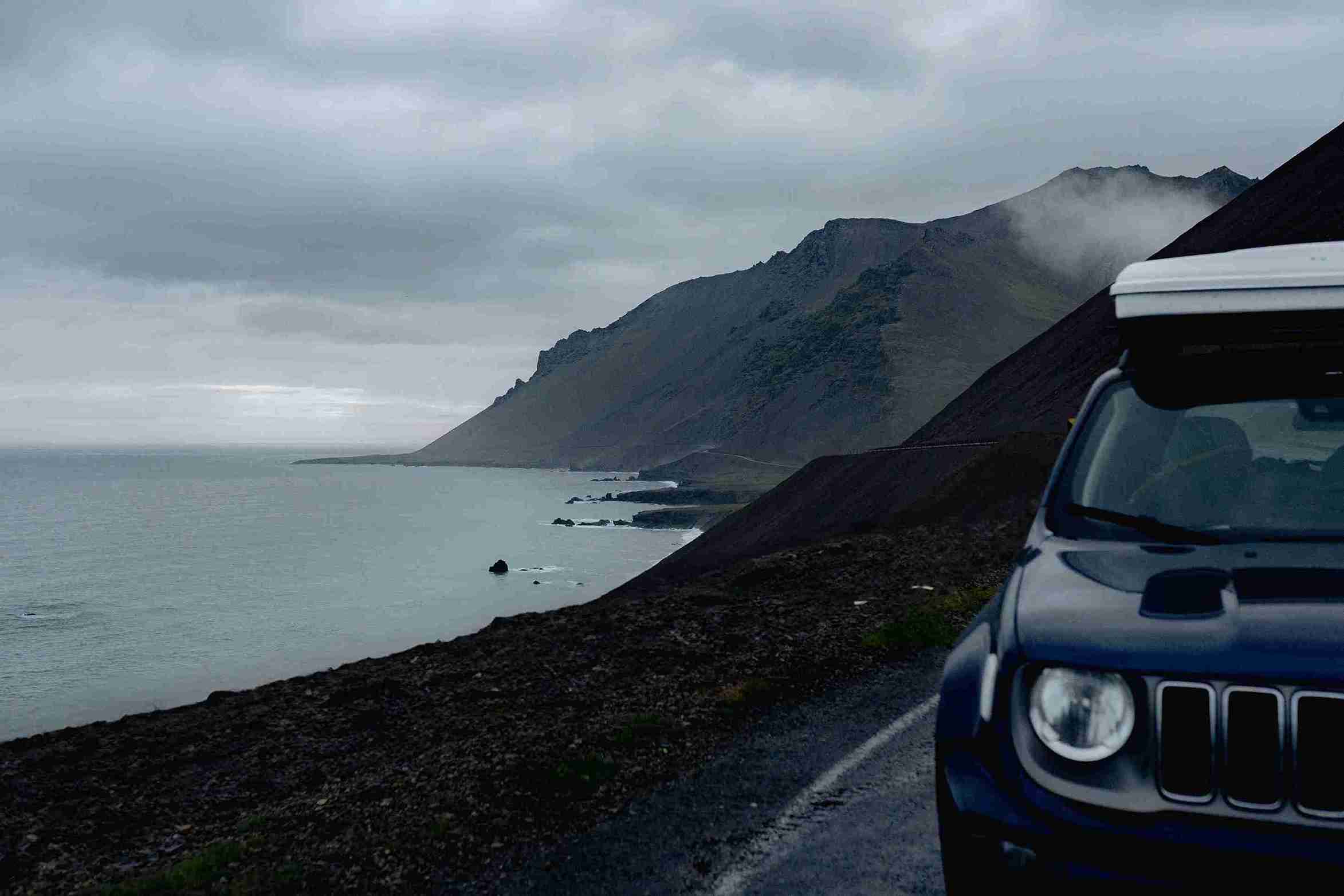“Two weeks in Iceland?! What can I possibly do for two weeks on such an underpopulated island near the Arctic?” The truth was: more than I could have ever imagined: with thundering waterfalls, eerie Martian landscapes, vast sand deserts, and a cosmopolitan capital, Iceland is more than just a chunk of ice adrift in the North Atlantic.
Keflavik - Búðardalur
Day 1
Our trip began after a rainy landing and slow start at Keflavik. To cope with the influx of tourism to the island, the airport is being expanded. To avoid some of the necessary disruption (a) don’t check bags and (b) if you do, don’t check a backpack,because it will be routed through the “oversize baggage” collection, meaning a longer wait.
We headed across the parking lot to pick up our van we’d booked through
Rent.is. After a short orientation on the simple yet essential functions of the camper van (heating, cooler, light) and its inventory (cooking and eating utensils, small fridge, GPS, cozy cabin with mattress and sleeping bags) we were ready to hit the road by that I mean preparatory stop #1, the supermarket for our road food. Bonus supermarkets are ubiquitous and there’s one near Keflavik, perfect for after you’ve picked up your rental. We bought things like canned beans and salsa (instant chilli), and instant rice (which we heated up and added tuna and capers to for a surprisingly tasty camping dinner).

Our plan was to head to the Westfjords, one of the least explored and largely uninhabited regions of the country, which according to Lonely Planet, only 14% of Iceland’s visitors ever see. Our planned route took us north of the capital, through a 5 kilometer long underwater tunnel, after which point we were very thankful to have the camper van, because we pulled off to a nice picnic spot and took energizing 20 minute nap in our new home on wheels, to stave off the lingering jet lag. We were making for the town of Búðardalur for our overnight pit stop, which thanks to our Cycling Iceland map we knew had a campground,
gas station and other facilities that we needed for our first night on the road.
We’d been told the weather in Iceland was ever changing, and sure enough, the clouds made way for bright sunshine and blue sky as we approached the town. We camped in the only campground there (free, since no attendant was to be found; showers 5000ISK with a preloaded card you buy in the guesthouse across the street) and as the sun dipped slowly over the sweeping bay, we decided we were off to a pretty good start.
Several hour long, multi hued arctic sunset
Lupine Photo Shoots and Highway Catwalks
Day 2

One of the standout features of an Icelandic road trip is due in part to the roads never being more than two lanes wide (with the exception of around Reykjavik), you can pull over at a moment’s notice, leaving you free to stop on a whim. The countryside is colored a brilliant purple by the ever present lupine flower, and on this particular day we couldn’t resist pulling over and doing a little photo shoot in one, especially because I knew it would just blow up my Instagram. Continuing our journey, we wove in and out of fjords and crested mountain passes without seeing much besides the dramatic landscape and free roaming sheep.
We stopped by the side of the road and used the highway as a catwalk. We shouted into the vistas. Nothing happened. No one stopped us. No one was there. This can be a blessing and a curse because the exclusive accessibility to such beauty lends itself to constant stopping, which can make for slow going travel. That evening we pulled up into the town of Flókalundur. On the approach we saw someone wandering along the highway in what looked like a bathrobe. My first thought was obviously “escaped mental patient”but Topher made the more logical inference of there perhaps being a natural hot spring this person was returning from, which later proved to be correct.

We treated ourselves to a local beer and serving of fried fish and chips, while we watched the protracted northern sunset at Hótel Flókalundur in the“center” of town.
Like many of the towns we traveled through, the center consisted of a large parking lotlike space with a combination gas station/ store/ restaurant plus a hotel. This hotel was on the nicer side, and on this particular day it was full of guests, all of whom were either coming from or going to the hot spring.We walked off our $30 plate of fish and chips down the road to the hot spring which was on the cooler side of “hot”. Nonetheless, we weren’t disappointed by the pool’s view, nor the soft pink of the almost midnight sun nor going to sleep or waking up in a campground that has 180 degree views of the ocean.

Red sands
Day 3
We continued our drive around the fingers of the fjords.It was mostly slow going down rutted dirt roads, which wove in and out of land and sea. Such was the case on the road to Rauðasandur (“Red Sand Beach”). A broad, multi-hued (despite its name) dream of a beach, its stretches out from the mountains backing it to the pounding waves, changing color from deep pink to desert yellow, with red sands in between. We were (un)surprisingly the only people we saw out on the flats, it stands out as a highlight of my trip. Calm sunshine on the serene beach turned to blasting wind once we reached the birdcliffs at Látrabjarg.

Though geographically close, travel at the end of the earth (and at Europe’s westernmost point) can be slow going. The bluff is home to birds of unfathomable numbers, including puffins, which are particularly tame as the cliffs’ dizzying steepness keeps them safe from foxes. We saw several, whose silent indifference was in stark contrast to all the puffin paparazzi gathered there.

After a being shaken up on the dirt road leading out of the Látrabjarg peninsula, we reached what we thought was Dynjandi Waterfall (Fjallfoss), Iceland’s waterfall poster child. A little further, however, we realized that it was by no means as big as the enthralling and dwarfing real cascade. It’s also possibly the most perfectly formed waterfall, as if someone made a wedding cake for the gods.The dramatic,100m high falls tumbles down a rocky escarpment and as we walked up toward her,we passed a series of smaller falls.You can really get up close to the main attraction and I found yelling in to the roaring falls to be a great stress reliever.
Ísafjörður
Day 4 and 5

After seeing flyers for this place posted around campgrounds,tourist info centers and on the backs of toilet doors in the region, we felt we had to check out Simbahöllin Cafe in Þingeyri. We weren’t disappointed: it’s the cutest coffee house this side of Fjallfoss. In the original interior of a 100 year old timber cottage, this fairy tale worthy outpost is full of travelers getting their fix of lattes and tasty comfort food like their nightly lamb tajine or rainbow trout and dill cream cheese sandwiches.
Fast WiFi and homemade rhubarb jam for sale made it the perfect bogie stopover before we went back to our camping diet. Early that afternoon, we reached Isafjordur, which in comparison to the previous towns and villages, felt relatively cosmopolitan: a choice of hotels,a walk able and compact center, and one of the best restaurants I’ve ever visited: Tjörhúsið. A family run restaurant (a bubbly sister and her two older brothers), with no menu, just the catch of the day served in a rotating buffet of 12 or so fish dishes, served in cast iron pans. They’re constantly cooking and the rustic decor,communal tables,and the steady din of diners made it feel like we were crashing a close knit family’s wedding.
The dishes includes spotted cat fish in both cream and sweet chili sauce, rainbow trout in a honey sauce, place in butter, cod cheeks in garlic, salted cod, Greenland halibut in hoisin sauce along with side dishes like potato salad,fluffy rice,and a coconut based fish stew served with homemade bread that I could have filled up on alone. People refilled, three, four, even five times. I had to stop myself from eating too much just because I wanted to taste everything twice. I will dream about this meal for years to come.
Homeward Bound
Day 6

I was sad to leave what had been our campground for the past two nights due to its setting, a vast green field bordered by mountains and also due to Isjafjordur’s (which we had nicknamed “Isadora” due to our continued ability to remember or pronounce it) starting to feel like a familiar little village.
Planning to being in Reykjavik by the next afternoon,we started the loop south. First stop was the Arctic Fox Center. The sleeping pups were cute in their serene and innocent slumber, I only wish we’d been allowed to petone. Since we couldn’t play with them,we instead got a very detailed biological education on foxes from an extremely knowledgeable and enthusiastic grad student who worked there.

We continued our aim of bathing in at least one hot spring a day, and stopped by the rather disappointing Heydalur, but made up for it by taking a dip in a deliciously sea ringpool that had “a sign saying “Private: please see farmer down the street” or something of the like.Thinking it was better to say sorry than ask for permission, we took the risk and had a warming frolic in a nice farmer’s personal hot spring. Five episodes of This American Life later, we’d rounded the apex of five fjords and were driving along a highland route that had been freshly washed by rain and along with the risings team and brownish red earth, we felt for the hundredth time as if we were on a very beautiful and peaceful alien world. We reached Reykjavik by early evening and spent our first night in a week in a “real” bed,though no matter how comfortable the mattress, the view waking up was never as good.
And finally…
Lessons Learned:
Use the free car wash facilities:After going along one of the many dirt roads,your car will look a mess. Not to worry: self service car wash facilities are free at all gas stations! Satisfaction is: blasting away dirt with a powerful fire department grade hose.
Hot Pot Iceland: Use hotpoticeland.com. It maps out the country’s hot springs,with photos and directions very helpful when the majority of them are unmarked.
Bring a double adaptor for your cigarette lighter charger: Between 2 phones,or a phone and a camera, PLUS the GPS, you’ll need it, or be fighting for juice.
Print some info ahead of time about sites you want to visit: You can supplement with WiFi, but it’s helpful to have basic info e.g. hot pots you want to visit.
Don’t rely on WiFi: Make sure to pick up a paper map (available at gas stations; we got ours at What’s On Iceland’s office in Reykjavik, a great tourism resource). Not only can it be a challenge to always have to keep the GPS charged or use your phone (though there’s service pretty much country wide), but the road system is pretty simple and it’s nice to actually have a sense for where you’re going physically. We found this was especially true when rounding the fjords.Also, gravel vs. asphalt roads aremarked, helpful for knowing how much longer/ shorter/bumpier that 40km will be.
Happy Camping! #CampingStories
Iceland Travel Guides


If you like what you see, please subscribe to our YouTube channel!
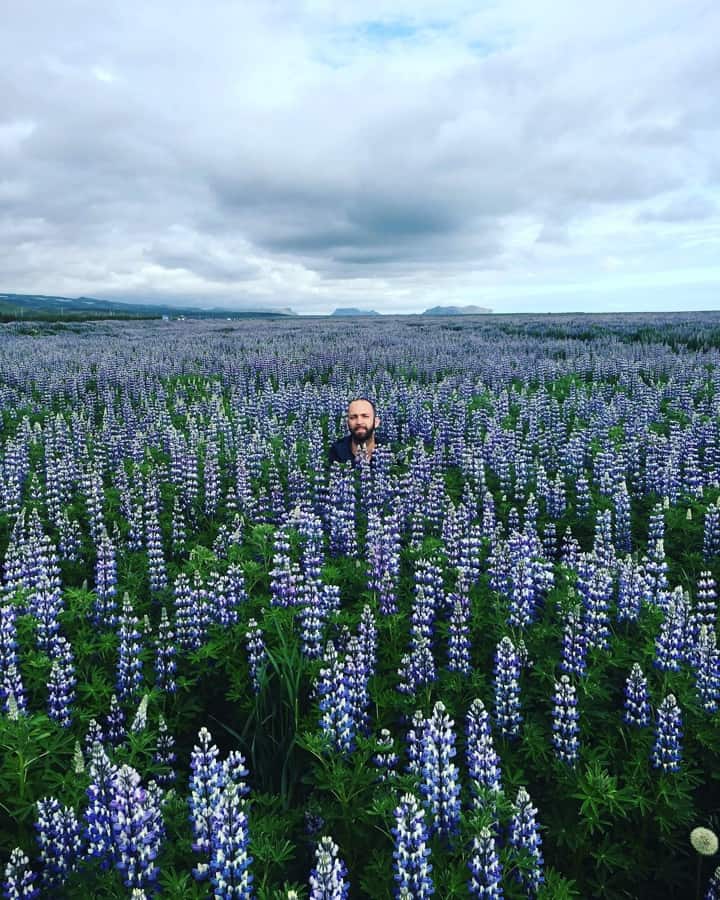 One of the standout features of an Icelandic road trip is due in part to the roads never being more than two lanes wide (with the exception of around Reykjavik), you can pull over at a moment’s notice, leaving you free to stop on a whim. The countryside is colored a brilliant purple by the ever present lupine flower, and on this particular day we couldn’t resist pulling over and doing a little photo shoot in one, especially because I knew it would just blow up my Instagram. Continuing our journey, we wove in and out of fjords and crested mountain passes without seeing much besides the dramatic landscape and free roaming sheep.
One of the standout features of an Icelandic road trip is due in part to the roads never being more than two lanes wide (with the exception of around Reykjavik), you can pull over at a moment’s notice, leaving you free to stop on a whim. The countryside is colored a brilliant purple by the ever present lupine flower, and on this particular day we couldn’t resist pulling over and doing a little photo shoot in one, especially because I knew it would just blow up my Instagram. Continuing our journey, we wove in and out of fjords and crested mountain passes without seeing much besides the dramatic landscape and free roaming sheep.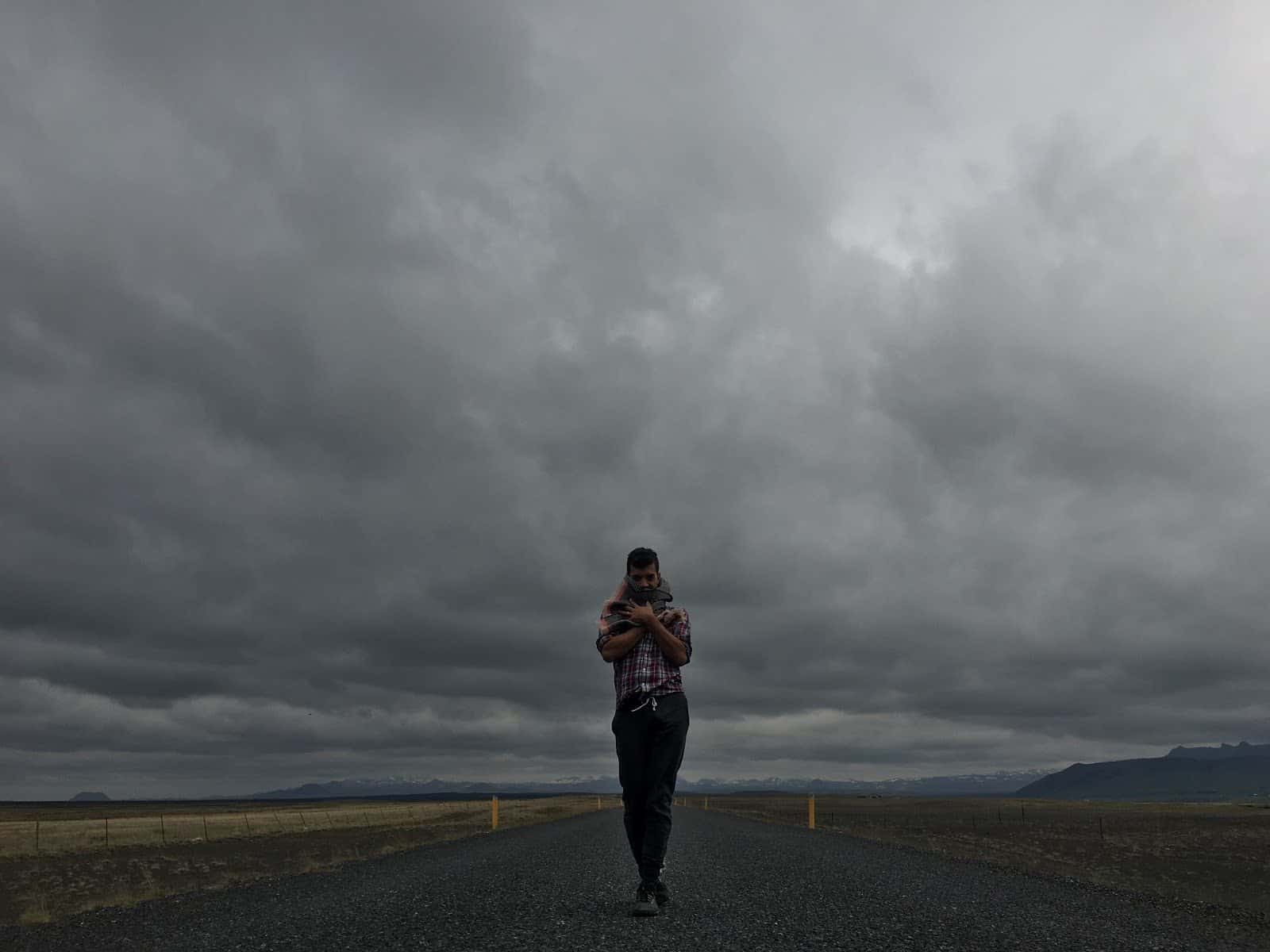 We treated ourselves to a local beer and serving of fried fish and chips, while we watched the protracted northern sunset at Hótel Flókalundur in the“center” of town.
We treated ourselves to a local beer and serving of fried fish and chips, while we watched the protracted northern sunset at Hótel Flókalundur in the“center” of town.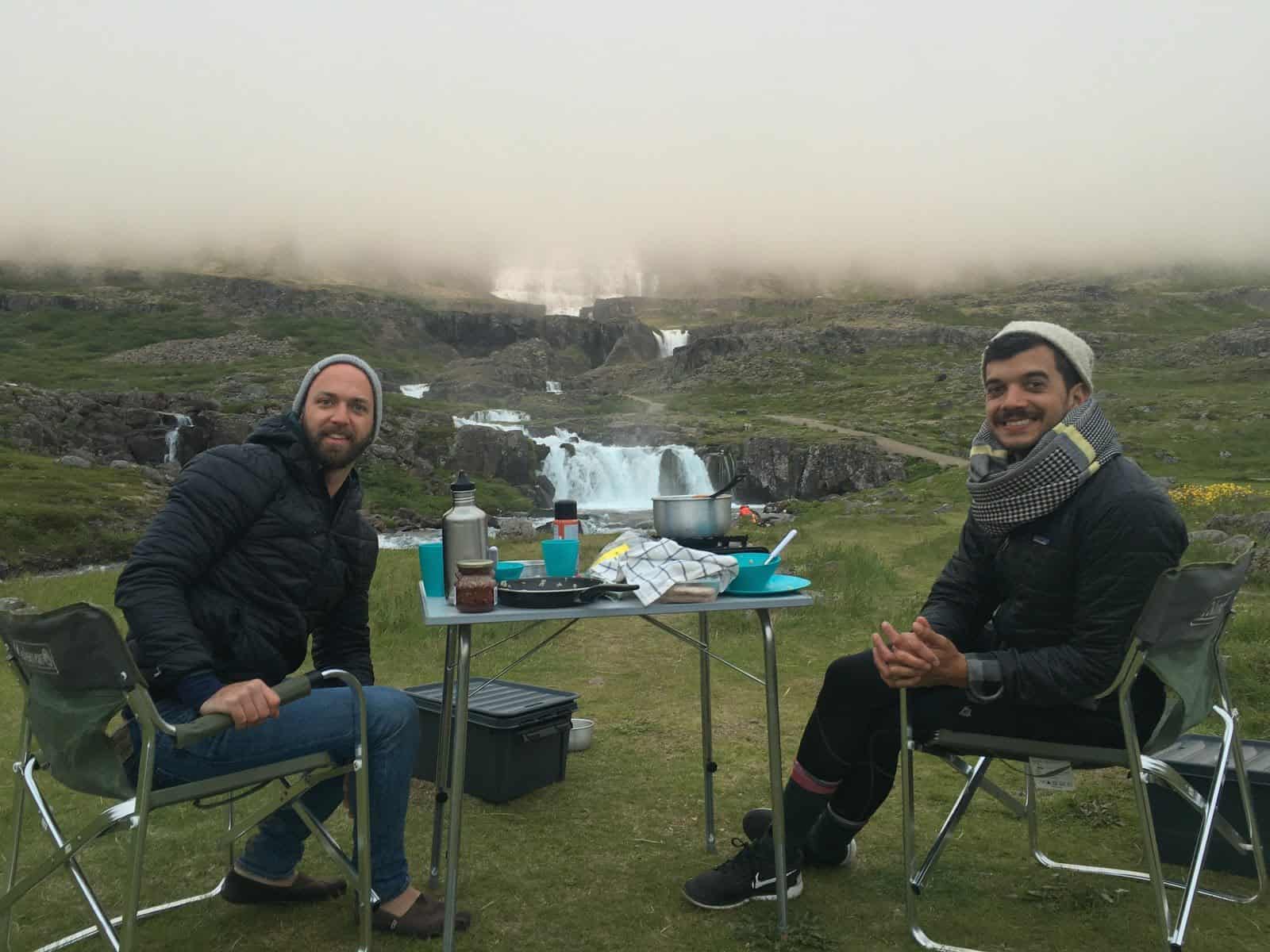 After seeing flyers for this place posted around campgrounds,tourist info centers and on the backs of toilet doors in the region, we felt we had to check out Simbahöllin Cafe in Þingeyri. We weren’t disappointed: it’s the cutest coffee house this side of Fjallfoss. In the original interior of a 100 year old timber cottage, this fairy tale worthy outpost is full of travelers getting their fix of lattes and tasty comfort food like their nightly lamb tajine or rainbow trout and dill cream cheese sandwiches.
After seeing flyers for this place posted around campgrounds,tourist info centers and on the backs of toilet doors in the region, we felt we had to check out Simbahöllin Cafe in Þingeyri. We weren’t disappointed: it’s the cutest coffee house this side of Fjallfoss. In the original interior of a 100 year old timber cottage, this fairy tale worthy outpost is full of travelers getting their fix of lattes and tasty comfort food like their nightly lamb tajine or rainbow trout and dill cream cheese sandwiches.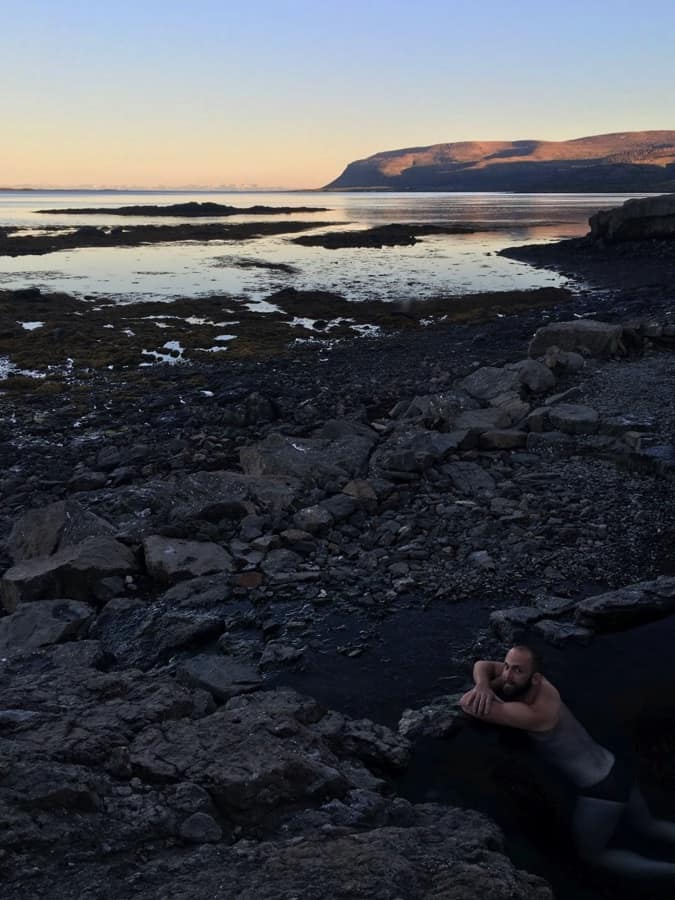 I was sad to leave what had been our campground for the past two nights due to its setting, a vast green field bordered by mountains and also due to Isjafjordur’s (which we had nicknamed “Isadora” due to our continued ability to remember or pronounce it) starting to feel like a familiar little village.
I was sad to leave what had been our campground for the past two nights due to its setting, a vast green field bordered by mountains and also due to Isjafjordur’s (which we had nicknamed “Isadora” due to our continued ability to remember or pronounce it) starting to feel like a familiar little village.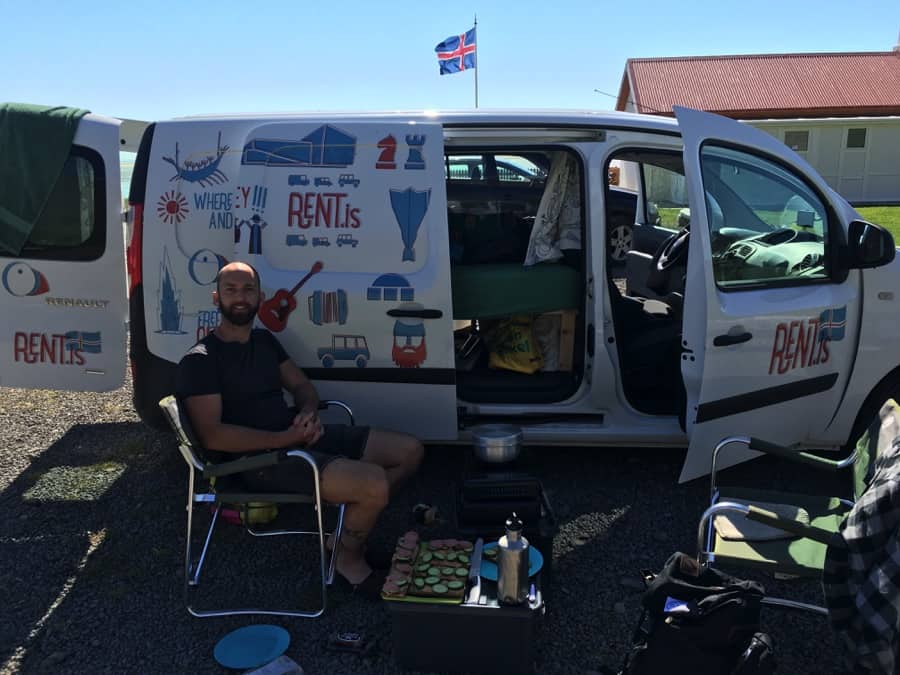 We continued our aim of bathing in at least one hot spring a day, and stopped by the rather disappointing Heydalur, but made up for it by taking a dip in a deliciously sea ringpool that had “a sign saying “Private: please see farmer down the street” or something of the like.Thinking it was better to say sorry than ask for permission, we took the risk and had a warming frolic in a nice farmer’s personal hot spring. Five episodes of This American Life later, we’d rounded the apex of five fjords and were driving along a highland route that had been freshly washed by rain and along with the risings team and brownish red earth, we felt for the hundredth time as if we were on a very beautiful and peaceful alien world. We reached Reykjavik by early evening and spent our first night in a week in a “real” bed,though no matter how comfortable the mattress, the view waking up was never as good.
We continued our aim of bathing in at least one hot spring a day, and stopped by the rather disappointing Heydalur, but made up for it by taking a dip in a deliciously sea ringpool that had “a sign saying “Private: please see farmer down the street” or something of the like.Thinking it was better to say sorry than ask for permission, we took the risk and had a warming frolic in a nice farmer’s personal hot spring. Five episodes of This American Life later, we’d rounded the apex of five fjords and were driving along a highland route that had been freshly washed by rain and along with the risings team and brownish red earth, we felt for the hundredth time as if we were on a very beautiful and peaceful alien world. We reached Reykjavik by early evening and spent our first night in a week in a “real” bed,though no matter how comfortable the mattress, the view waking up was never as good.
